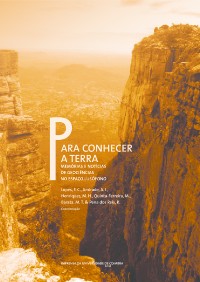Please use this identifier to cite or link to this item:
https://hdl.handle.net/10316.2/31423| Title: | Foraminíferos atuais do litoral de Benguela (Angola): caracterização taxonómica e implicações biogeográficas | Other Titles: | Recent foraminifera from the Benguela Coast (Angola): taxonomic characterization and blogeographic implications | Authors: | Canales, M. L. Henriques, M. H. Mbadu, E. |
Keywords: | Recent Foraminifera;Benguela;Benguela;Taxonomy;Biogeography;Foraminíferos atuais;Benguela;Angola;Taxonomia;Biogeografia | Issue Date: | 2012 | Publisher: | Centro de Estudos Clássicos e Humanísticos da Universidade de Coimbra | Journal: | http://hdl.handle.net/10316.2/24406 | Abstract: | In this work the taxonomic characterization of the benthic and planktonic
foraminifera assemblages recorded in Recent sediments along the Benguela coast (Angola) is
presented, and its implications from a biogeographic point of view are discussed. The study is
based on five samples collected in five localities between Cuio (southern Benguela) and Lobito
(northern Benguela), which have provided a total of 424 specimens.
From a taxonomic point of view, 6 suborders, 22 families and 32 genera were recognized,
the most abundant belonging to the Suborder Rotaliina, Families Uvigerinidae, Rotaliidae
and Elphidiidae, and Genera Uvigerina, Ammonia and Elphidium. They are followed by
representatives of the suborders Lagenina, Globigerinina and Miliolina, being Textulariina
and Robertinina, considered as minoritary.
The presence of representatives of certain taxa, and the recognition of certain morphological
characteristics of the shells of representatives of the Suborder Globigerinina, allow the recognition
of bioprovinces in the present day oceans. In this case, the analysis of planktonic shells recorded in
the studied material allow us to recognize the presence of taxa characteristic in the Sub-tropical bioprovince, as well as the influence of the Benguela Cold Current, in that part of the Angola coast No presente trabalho apresenta-se a caracterização taxonómica das associações de foraminíferos bentónicos e planctónicos reconhecidas em sedimentos atuais do litoral de Benguela (Angola) e discute-se o seu valor do ponto de vista biogeográfico. Este estudo assenta em cinco amostras recolhidas em cinco locais situados entre o Cuio (a sul) e o Lobito (a norte), e, a partir delas, obteve-se um total de 424 exemplares. Do ponto de vista taxonómico, as associações são constituídas por formas bentónicas e planctónicas, sendo as primeiras dominantes. Reconheceram-se 6 subordens, 22 famílias e 32 géneros, sendo muito abundantes nas associações os representantes da Subordem Rotaliina, das Famílias Uvigerinidae, Rotaliidae e Elphidiidae e dos Géneros Uvigerina, Ammonia e Elphidium. Seguem-se, quanto à abundância relativa, os representantes das subordens Lagenina, Globigerinina e Miliolina, considerando-se Robertinina e Textulariina como minoritárias. A presença de representantes de determinados táxones, bem como o reconhecimento de certas características morfológicas das carapaças dos representantes da Subordem Globigerinina, permitem reconhecer bioprovíncias nos oceanos atuais. Neste caso, a análise das carapaças planctónicas registadas no material estudado permitiu reconhecer a presença dos táxones que se distribuem na bioprovíncia Subtropical, bem como a influência da Corrente Fria de Benguela, naquela zona do litoral de Angola |
URI: | https://hdl.handle.net/10316.2/31423 | ISBN: | 978-989-26-0534-0 (PDF) | DOI: | 10.14195/978-989-26-0534-0_19 | Rights: | open access |
| Appears in Collections: | Para conhecer a Terra: memórias e notícias de Geociências no espaço lusófono |
Files in This Item:
| File | Description | Size | Format | |
|---|---|---|---|---|
| 19-para_conhecer_a_terra_artigo.pdf | 1.01 MB | Adobe PDF |  |
Items in DSpace are protected by copyright, with all rights reserved, unless otherwise indicated.
